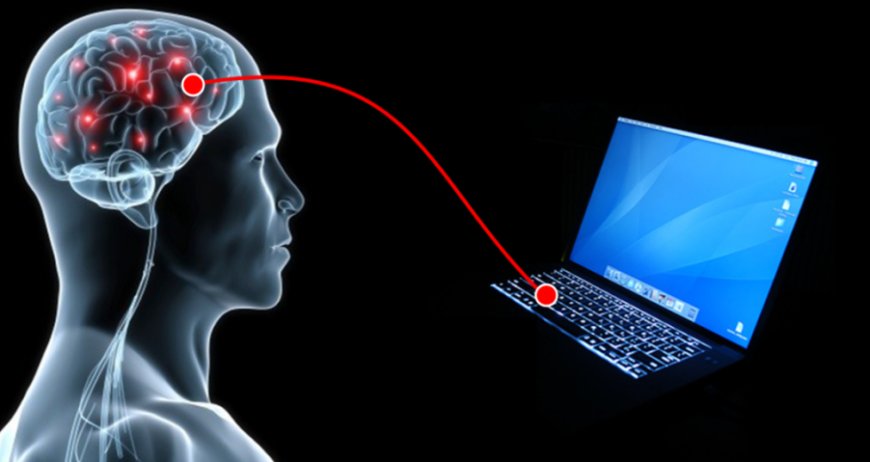What is a Brain-Computer Interface (BCI)?
Explore how brain-computer interfaces (BCIs) are merging humans with technology. From restoring movement to mind-controlled devices, is the future cyborg?

Imagine a world where you can control a computer with just your thoughts or restore lost mobility through a direct brain connection. Brain-computer interfaces (BCIs), once the stuff of science fiction, are now becoming a reality—blurring the lines between humans and machines.
But as we enhance our brains with technology, are we inching closer to becoming cyborgs? Let’s explore how BCIs work, their current advancements, and what the future holds for this mind-bending technology.
What is a Brain-Computer Interface (BCI)?
A brain-computer interface (BCI) is a system that enables direct communication between the brain and an external device—bypassing traditional means like speaking or typing.
How BCIs Work:
???? Brain Signals: The brain generates electrical activity when we think or move.
???? Signal Processing: Electrodes or implants detect and decode these signals.
???? Device Control: The translated signals are used to operate a computer, robotic limb, or other external device.
BCIs can be non-invasive (external sensors, like EEG caps) or invasive (implants inside the brain), with each method offering different levels of accuracy and speed.
BCIs in Medicine: Restoring Mobility & Speech
One of the most life-changing applications of BCIs is in healthcare. Scientists and engineers are developing brain-controlled devices to help people with paralysis, neurological disorders, and speech impairments.
✅ Restoring Movement with Mind-Controlled Prosthetics
People with spinal cord injuries or amputations can now control robotic limbs using their thoughts.
???? Breakthrough: In 2023, researchers at Stanford helped a paralyzed man move his hand again using a BCI implant that connected his brain directly to his muscles.
✅ Helping Patients Speak Again
For individuals with conditions like ALS (Lou Gehrig’s disease) or stroke-induced speech loss, BCIs offer a way to communicate through brain signals.
???? Real-world impact: In 2021, a man who lost his ability to speak due to a stroke used a BCI to generate 90 words per minute, simply by thinking of the words.
✅ Treating Neurological Disorders
BCIs are being tested for treating conditions like:
- Parkinson’s disease (by delivering brain stimulation)
- Epilepsy (detecting seizures before they happen)
- Depression (targeted stimulation for mood disorders)
Could BCIs one day replace medication for certain neurological conditions? Scientists are optimistic.
BCIs in Everyday Life: A Tech Revolution?
Beyond medicine, BCIs are entering the world of consumer technology—with companies racing to create brain-controlled devices for daily use.
???? Neuralink: Elon Musk’s Vision for Human-Machine Integration
Elon Musk’s company Neuralink is developing brain implants that could let people control smartphones, play video games, or even merge with AI.
Neuralink’s big goals:
- Let people type with their thoughts
- Improve memory and intelligence
- Create a “symbiosis” with AI
In 2024, Neuralink successfully implanted its first human trial participant, showing that a chip in the brain can wirelessly control a cursor on a screen.
???? Brain-Controlled Gaming & Virtual Reality
Imagine playing video games or navigating the metaverse using only your mind. Companies like Valve and Meta (formerly Facebook) are working on BCI-driven VR experiences.
???? What this could mean:
- Fully immersive mind-controlled games
- Thought-based social interactions in virtual worlds
- Enhanced cognitive training tools
???? Hands-Free Tech: The End of Screens?
One day, BCIs might replace keyboards, touchscreens, and voice assistants altogether. Instead of tapping on a phone, you could just think about texting someone—and it happens.
???? Big question: Would this make life easier, or would it create new privacy and security risks?
Are We Becoming Cyborgs?
The definition of a cyborg is a being that has both biological and technological enhancements. With BCIs, humans are already crossing into cyborg territory—but the question is: how far will we go?
Pros of BCI Technology:
✅ Restores lost abilities (mobility, speech, cognition)
✅ Enables new ways to interact with technology
✅ Enhances human intelligence & capabilities
Concerns & Ethical Challenges:
⚠️ Privacy risks: Could companies or governments access our thoughts?
⚠️ Hacking threats: Could brain implants be hacked or manipulated?
⚠️ Social inequality: Will only the rich have access to brain-enhancing tech?
Many experts believe BCIs should be regulated before they become mainstream. But one thing is certain: this technology isn’t slowing down.
The Future of BCIs: Where Are We Headed?
???? By 2030: BCIs could be widely used for medical treatments and disability assistance.
???? By 2040: We may see brain-controlled consumer tech, like mind-powered smartphones.
???? By 2050: The idea of “merging with AI” could become a reality—potentially enhancing human intelligence beyond natural limits.
Could BCIs be the next step in human evolution? Or are we opening Pandora’s box?
One thing is certain: the era of brain-computer interfaces is just beginning—and the line between humans and machines is blurring fast.
Are you ready for the future?
What's Your Reaction?
 Like
0
Like
0
 Dislike
0
Dislike
0
 Love
0
Love
0
 Funny
0
Funny
0
 Angry
0
Angry
0
 Sad
0
Sad
0
 Wow
0
Wow
0



















































